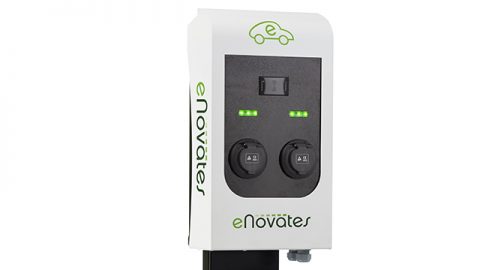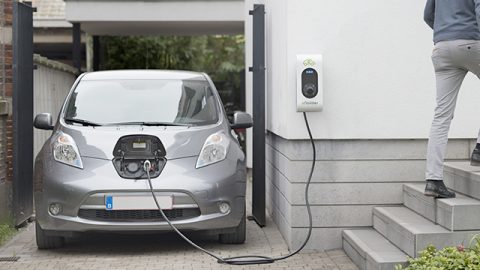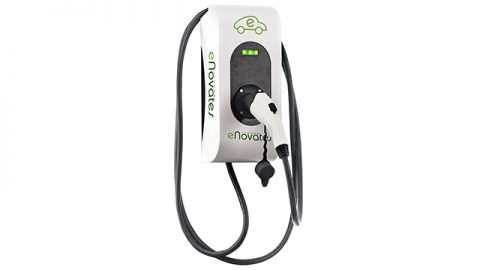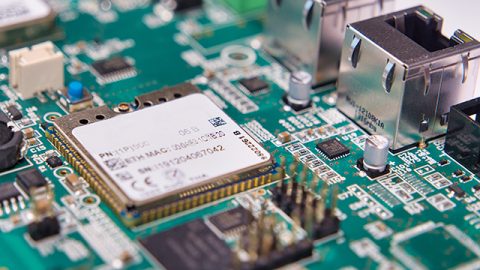Improving development efficiency for electric vehicle chargers
Improving development efficiency for electric vehicle chargers
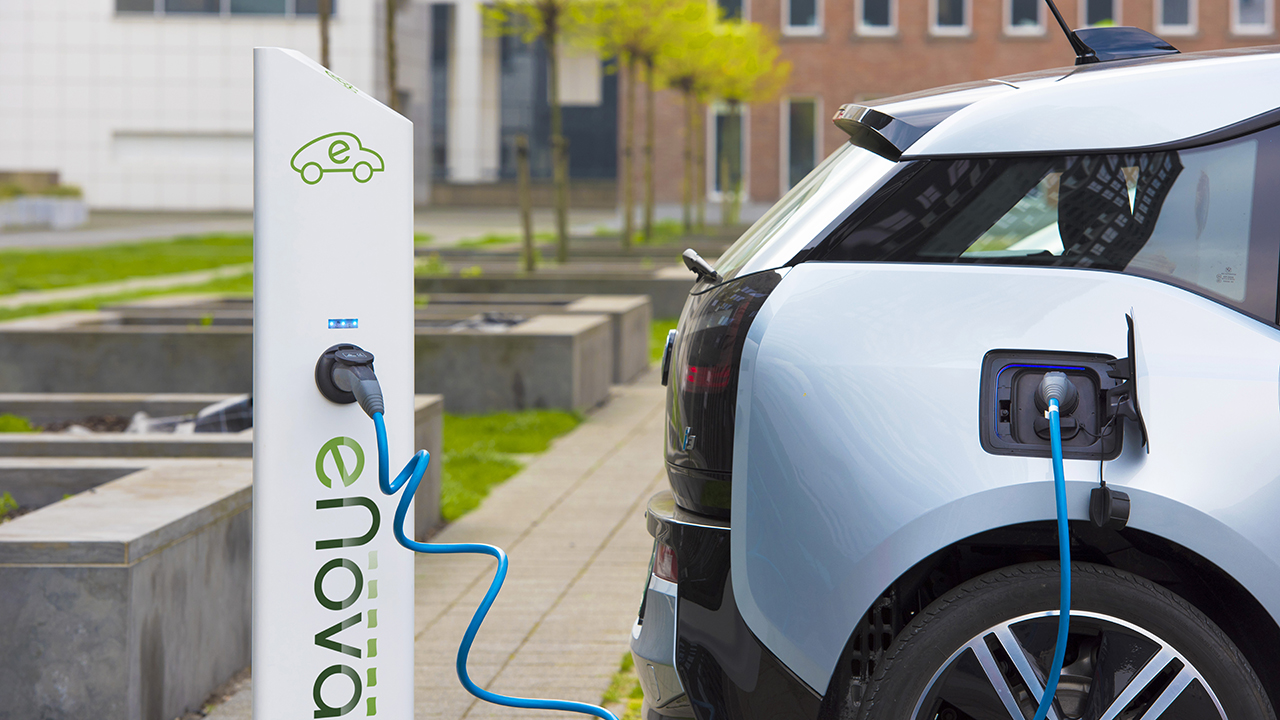
CHALLENGES
- Develop products in short timeframes
- Integrate multidisciplinary design workflows
- Eliminate information silos in product development
- Improve communication with contract manufacturers
KEYS TO SUCCESS
- Implement integrated solutions for mechanical, electrical, and electronic design and technical publication
- Rely on training and support from ADOPT id PLM, a Siemens solution partner
RESULTS
- Streamlined design iterations
- Reduced errors
- Prepared thorough and accurate design and manufacturing documentation
PARTNER HIGHLIGHT
ADOPT id PLM
Read more
ADOPT id PLM
eNovates uses Solid Edge portfolio and PADS to integrate mechanical, electrical, and electronic design.
“Virtual prototyping helped us reduce physical mockups and prototypes by 80 percent.”
Supporting the electric mobility ecosystem
eNovates is a rapidly growing technology company driven by mobility and sustainability. The company was founded in 2010 as a think-tank in a business club focused on developing and producing charging systems and energy management software to support the electric mobility ecosystem.
eNovates is expanding in the European Union and has an important market share in delivering public charging infrastructure, with about 80,000 charging stations installed in early 2021. The company is expanding its reach into smart energy management and recently added a vehicle-to-grid (V2G) charger to its portfolio. Its customers are charge point operators (CPOs) – companies who sell charge points, connect them to networks and provide maintenance. eNovates serves its CPO partners as an original equipment manufacturer (OEM).
“Some of our customers approach us with no more than an idea for the final product. In this case, we can base ourselves on a set of generic platform components and products to realize the best-fit custom product for the customer,” explains Stijn Vispoel, research and development (R&D) manager at eNovates. “Others come to us with an enclosure and ask us to develop a charger for it. We do full projects for them, and all solutions include mechanical, electrical, electronic, and software components.”
Product development for rapidly changing requirements
Technologies, regulations, standards and customer requirements are evolving quickly in the electric mobility ecosystem. “The biggest challenge is the constantly and rapidly changing guidelines in the market,” Vispoel says. “We have to be on top of all the new developments and we really need a new product every year. It’s important to have enough R&D capacity to keep up with the changing requirements for charge points. Another factor is the different regulations in different countries in Europe. For example, customers in the Netherlands have different requirements than customers in France.”
Vispoel leads a team of project managers and support personnel with varying backgrounds in mechanical, electrical and electronic engineering. “We begin each project with a prototyping phase where we develop the printed circuit boards we need, the electrical wiring and mechanical components,” Vispoel explains. “Once we do all the checks on the digital design files, we make some prototypes and do test runs to confirm that they comply with the customer requirements and regulations. Then we enter what we call the alpha phase, redesigning any components that need modifications. We make another batch of the product, around 30 to 50 chargers, and do another validation run, performing temperature and high-voltage tests. We also have customers who use them to charge cars and run additional tests.”
In the next stage of development, the beta phase, eNovates makes necessary design modifications and orders a new batch of the product. “We go directly to certification labs with the beta chargers, and place about 100 chargers in the field with our customers, so we are certain that the product is mature enough and it’s fully certified to go into the market,” says Vispoel. “At that stage we typically don’t develop the hardware further – the focus is on finishing the software. Finally we go into production for our customers.”
Disparate systems and information silos
Over its history, eNovates had acquired engineering software systems for mechanical computer-aided design (MCAD), two different printed circuit board (PCB) design solutions, and a system for electrical wiring and harness design. The systems had been selected based on engineers’ prior experience and partners’ and customers’ use of the solutions.
This software landscape had some limitations: The MCAD system lacked electrical design functionality, the wire harness design system had no 3D capabilities and neither system easily exchanged data with the PCB design tools. The four separate and disconnected software solutions created information silos that hampered interdisciplinary collaboration. Each software package used different data formats that impeded the transfer of information between disciplines. Because the software was purchased from different vendors, the new versions of each software solution were not synchronized with the others and eNovates had four different sources of support.
Using this approach, the mechanical design team sent their design models to the electrical team, which amended the designs and returned them to the mechanical team. These iterative design exchanges continued over weeks and months, resulting in huge design and prototyping costs and product launch delays. The information silos and barriers between systems made it difficult for eNovates to fit electrical designs into mechanical spaces. They also created problems in communicating design information to contract manufacturers. eNovates was sending confusing and disconnected details of the design for manufacturing, which resulted in issues with requirements and regulations.
Integrating engineering disciplines and solutions
To eliminate the workflow inefficiencies, eNovates searched for an integrated software toolset that better suited the fast pace of development. From contacts at Ghent University, the eNovates team was introduced to Solid Edge® software, which is a part of the Xcelerator™ portfolio of solutions and services from Siemens Digital Industries Software and a leading mainstream product development platform.
eNovates contacted ADOPT id PLM, a Siemens solution partner in Belgium. After an initial meeting, ADOPT id prepared a presentation for eNovates that included Solid Edge and its integrated electrical design and technical publishing tools. The demonstration illustrated how all of the Solid Edge mechanical design, electrical wire routing and harness design, and technical publishing applications were fully integrated and used the same data format and user interface conventions. ADOPT id also proposed Siemens EDA (formerly Mentor) PADS Professional software, also integrated with Solid Edge, for PCB design and verification (PADS is supported by Siemens EDA solution partner Innofour). The presentation also emphasized the bidirectional data flows and associativity across the mechanical, electrical and electronics domains – design modifications in each discipline are automatically reflected in the others.
eNovates quickly made the decision to choose the proposed Siemens solution for several reasons. “We wanted all of our software tools to work together so we could have a streamlined design flow for our fastpaced development,” Vispoel explains. “For complex products with high quality standards and efficient production, we needed to transfer information very efficiently. The Siemens software offered us a better match to help us make fewer errors in our design iterations. We didn’t find this level of integration anywhere else in the engineering software market. And we regard Siemens as a very big technology provider, a market leader in software and a brand that delivers quality.”
Documenting designs for manufacturing
“We fully outsource our production,” Vispoel says. “We deliver the contract manufacturer a full package of information on how the product has to be made, how to test it, how to package it. And then they translate what we do in engineering into making the product. They source every component, make every PCB and test everything based on the instructions we provide.”
With its previous software solutions, eNovates could deliver a 3D file depicting the mechanical design, electrical drawings, and three separate bills of materials (BOMs) for drawing mechanical, electrical and PCB content. However, the information was not well integrated, and its delivery was not efficient.
Solid Edge Technical Publishing software offered eNovates a superior solution for preparing information for manufacturing. Now, the manufacturing package includes a unified BOM for the entire product, which is especially useful for pricing. For PCB manufacturing, a standard format file produced using PADS Professional software includes information about each physical board layer and coordinates for PCB objects like copper traces, vias, pads and solder masks. For electrical manufacturing, Solid Edge Technical Publishing software extracts the list of cables and their locations, connections, cut lengths, and torques required on their connecting screws, all produced using the Solid Edge electrical design software. With the Solid Edge 3D model, the publishing software fully and visually describes each step in the product assembly and testing processes.
Streamlined workflows boost efficiency
With the new integrated toolset, eNovates benefits from improved efficiency throughout the development and manufacturing cycle. “This was a big win for us,” Vispoel says.
Solid Edge 3D design software includes synchronous technology, which enables eNovates to edit CAD data from any source and leverages built-in product data management and cloud collaboration tools. Solid Edge electrical design satisfies eNovates’ need for 3D wiring and harness design and validation in mechanical assemblies.
Solid Edge technical publishing has helped eNovates improve the clarity, accuracy, and completeness of manufacturing information in comprehensive case files. The integration of PADS Professional with Solid Edge has helped improved communication between PCB designers and mechanical engineers.


